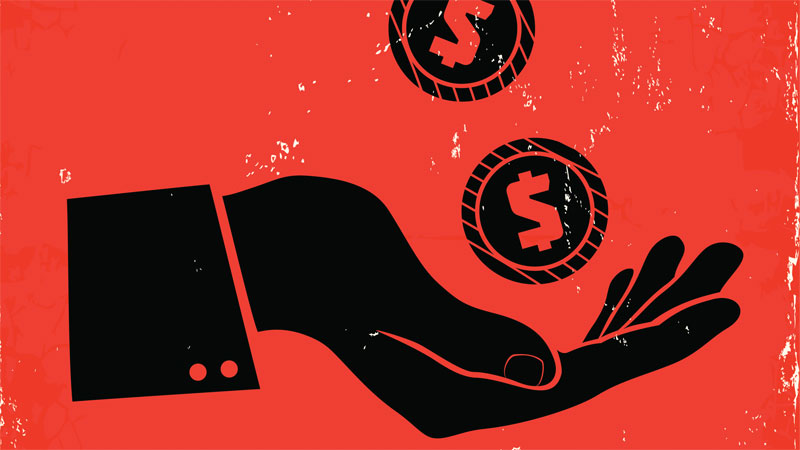Multimedia artist Torreya Cummings whose day job is Design Installation Specialist at the Oakland Museum of California says, “[I] beg, borrow, barter, steal, trade, share; get a day job that also counts as research and access; keep your ears open; keep overhead low; try to be efficient; manage time; make friends who will still hang out after you disappear for months; lovers who understand why you aren’t around all the time; be courteous to people you meet because you never know when you can help each other expand the world; be easy to work with/for; express appreciation; and be helpful when you can spare it.”
Cummings acutely hones in on the lattice needed to grow an artistic profession. Artists are a part of a constellation of workers that rely on one another to keep the arts healthy and alive; artists, curators, gallery owners, administrators, handlers, preparators, educators, and more may work independently from one another but are ultimately dependent on each others’ labor.
The well-documented, recent exodus of commercial and non-profit arts spaces in San Francisco is a significant loss to what Frock deems an “ecosystem.” There is much debate over the efficacy of the “white cube,” commercial gallery model and perhaps the closure of these galleries does point to a changing time and necessary shifts in the art world. But in the most practical sense, these commercial galleries are small businesses that are often run by a handful of employees who devote their time and efforts to the arts. A key part of what they do is pay artists for the sale of their work and support them by facilitating future opportunities. While there is still much to critique about the white cube model, what remains is that many arts professionals, including artists, have lost their jobs with the closing of these galleries and are flooding a market already overfull with unemployed, or under-employed artists.
In truth, most of the artists who live and work in the Bay Area will never be represented by or even exhibit with the few blue chip commercial galleries, so then the end of Intersection for the Arts’ programming or the closure and uprooting of like non-profit organizations carries much more of an impact. These organizations not only offer opportunities to exhibit and build audiences for artists, they also cultivate and fund writers, curators and administrators. Britton recalls how her career greatly benefited from projects she was encouraged to take on at non-profit organizations such as Intersection for the Arts, San Francisco Arts Commission Gallery or the San Jose ICA because she was allowed to experiment, fail and grow. This past year she joined Gallery Wendi Norris’ artist roster but acknowledges that the work she did at those non-profit spaces led to the art she has since made while working with Norris.
For generations, creative types have been drawn to San Francisco’s hills and chilly summers because it has been perceived as a safe and generative place to be an artist. Artists still create, build community, collaborate and share ideas after their day jobs, during lunch hours and on the weekends. The SF Bay Area’s culture of generosity is powerful. In spite of the exclusivity of galleries or larger art institutions, and now in their absence, artists still create places to exchange work, practices and creative gestures in stairways, basements, nooks, living rooms, on street corners, billboards and in digital spaces. This is, after all, a city of startups.
Spaces and projects that work within this exchange economy are vital and necessary for a healthy arts community because they, amongst other things, help artists build audiences and offer opportunities to exhibit work outside of traditional conventions. But they do not replace the businesses and organizations that work full time and after hours to pay artists and art workers, participate in city legislature for the arts, work to create donor bases and programming that will fund the arts long-term and reach out to youth and other culturally specific audiences.
“There is less institutional help or opportunities for people to be paid, so the crunch is felt more,” claims artist Michael Hall. He recently made the career decision to downsize his supplemental workload and focus more on his art practice — weeding through teaching multiple college classes, artist assistance gigs and a job at Oakland-based non-profit Creative Growth. But this means that more of his living income is reliant on a local art economy that is shrinking.
Hall embraces how important community exchange is and he knows personally that artists are often each others’ greatest resource, but calls on artists to insist on value where value’s due, “We are complicit when we give away our work for the hope of exposure or opportunity or even helping a friend’s space.” The flip side of the Bay Area’s spirit of creative generosity can manifest as the cultural understanding that talking about money is inappropriate or somehow taints the creative process. To be clear, this is not a call to corporatize art or “make it all about business,” Hall clarifies, but to simply challenge the common perception, or expectation, that free art and free labor are always the alternative — a culture of generosity has its limits — especially within an arts community facing economic crisis in a city hugely impacted by financial growth.
For all of the creative ways that artists supplement their artistic practice, the least common is through their actual artistic production even if they exhibit actively. With the absence of institutions, organizations and businesses that focus on paying artists for their work, it is increasingly urgent to consider new models that value creative freedom but also prioritize a sustainable art economy based on more than cultural value.


